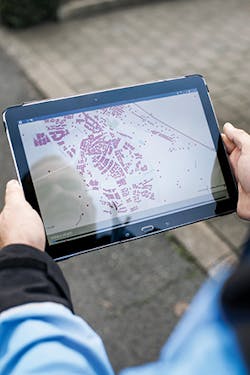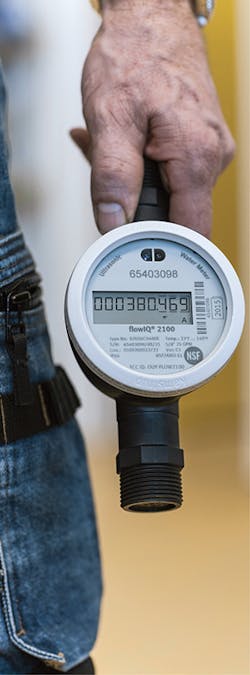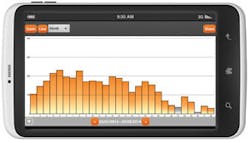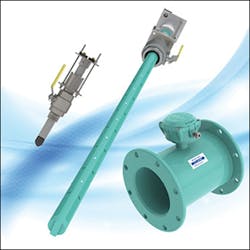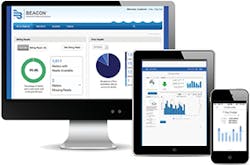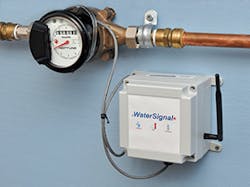THE CASE FOR AMR
According to John Fillinger, director, utility marketing for Badger Meter, AMR increases efficiencies and reduces the expenses associated with manual reading and human errors associated with reporting those readings. “AMR makes it easier to get from quarterly billing to monthly billing, if this is something they want to do,” he says.
“AMR will reduce operations costs for the water utility,” says David Taylor, senior vice president for WaterSignal. “Reduction in operational cost would include meter reading, site visits, and customer support calls.”
First and foremost, according to Brittany Halterman, senior product manager for McCrometer, the benefit of AMR is efficiency gains in collecting data. “Additionally, automation typically has better accuracy, so the quality of your data is better,” she says.
David Hanes, marketing director of strategic development for Neptune Technology Group, believes that the biggest benefits of mobile AMR are in the area of improved customer service and operational efficiency. “Customer service benefits from more accurate meter readings and a significant reduction of estimated readings,” he says. “Improved accuracy and low estimates have a ripple effect for the utility as these invariably lead to fewer complaints, lower rates of payment delinquency, and fewer truck rolls to address reading concerns.”
A huge enhancement in this area is the ability to use the meter’s ability to log hourly meter reading data so that the customer can be shown their usage patterns for the past 90 days, eliminating the question of whether or not the customer actually used the water.
Ultimately, according to Hanes, this improvement in customer service results in an improved public image for the utility. “On the operational efficiency side, we generally see about a tenfold improvement in reading efficiency,” he says. “The people who are no longer needed to spend time reading meters can then be assigned to work on more proactive measures such as regular maintenance or tasks that improve customer service.”
The easier an AMR system is to use, the better. The intuitive nature of the software and the use of a smartphone or tablet make Kamstrup’s AMR system simple.
“AMR makes meter reading a less time-consuming task, and the readings are more accurate,” says Kali Gerhardt, marketing manager for Kamstrup Water Metering. “For water professionals with a long list of things to do, what’s not to like about that? The benefit of reading meters more efficiently is that it frees up utility personnel to perform other value-adding functions.” For example, one of Kamstrup’s customers in Tennessee performs all the municipal work in the city. They were using too much time reading meters and re-reading those that came back with inaccurate reads. “By adding Kamstrup READy AMR system, they read meters via our drive-by system, and the meter reads are automatically transferred to the office program for billing,” she says. By automating their meter readings, they reduced the time-consuming burden of this administrative task, and instead, use their time on more community-enriching operations like spending more time taking care of their parks.
Customers of water utilities can also benefit from remote meter reading. Just as in the previously mentioned example, the community at large benefits from more efficient meter readings because working hours are spent in other areas of the water system or city. “It’s important for customers to pay for exactly the amount of water they use—no more and no less—because paying more is unfair to the customer and paying less is unfair to the water system’s operations,” says Gerhardt.
An accurate meter is critical to the success of an AMR or AMI system. Kamstrup’s flowIQ meters are manufactured
in an automated production facility to keep quality high and
eliminate non-performing meters.
“The last couple years we have seen very few water utilities looking at AMR,” says Joe Ball, director of solutions marketing, North American Water, for Itron. “Most of the new system and solution activity has been focused on AMI. That said, there are still many benefits for a water utility moving from manual meter reading to AMR.” These include reducing meter reading costs, more accurate and efficient meter reading, the opportunity to do monthly billing, interval consumption data, and meter alarms and alerts.
THE CASE FOR AMI
According to Fillinger, AMI provides improved customer service. “As more data is available, utilities have more tools at their disposal to be able to work with their customers to help them understand and manage their water usage,” he says. “They can also notify customers of potential leaks at their homes.”
“AMI provides the same benefits as AMR, but the benefits are extended to include two-way communication on an AMI system,” says Taylor. “A utility utilizing an AMI system would not have to run trucks in order to take meter readings unless there was an issue with the AMI system.”
As Halterman sees it, AMI implies a more comprehensive system, so the utility’s data gets put to use better, and in ways that are more automated. “For example, leak detection, which remains a big concern for utility executives, becomes easier and more automated,” she says. Additionally, the utility can read the meters as frequently as every hour and utilize that data in order to manage the entire water system more effectively.
The biggest technical differences between AMI and AMR, according to Hanes, are access, latency, and volume of data. “With AMR, the utility generally gets a meter reading once a month by sending someone into the field to capture it,” he says. With AMI, the utility generally gets hourly readings every day without the need to leave the office. More data, more promptly means the utility can be more proactive and have a deeper view into what’s going on in the field. Eliminating the need to go into the field for readings reduces labor costs for that function as well as the associated overheads (vehicles, gas) and risks (dog bites, accidents) of deploying a field worker.
A screenshot of Neptune’s system
“AMI adds significant efficiencies to meter reading, similar to AMR,” says Gerhardt. “You collect meter readings from your utility location, and the data is automatically sent back to the office for billing.” With AMI, a water system gets more granularity in the data they receive, because they can increase meter readings from monthly to daily or hourly. “What’s also more impactful from AMR versus AMI, are the additional tools you can implement into an AMI system that go well beyond meter reading and billing,” she says. If a utility is interested in reducing its energy costs and empowering its customers with online access to their usage information, then AMI is the right path to explore.
How can a water system reduce energy costs with AMI? “With a fixed network, you can integrate new tools into your network,” says Gerhardt. Kamstrup offers in Europe, and soon in the US, a PressureSensor. This sensor monitors the pressure in a pipe and then the information is sent back to the utility through the same radio network used to receive meter-reading data. When water superintendents can easily monitor pressure throughout the distribution network, they can optimize the pressure in the system, meaning they can understand what pressure works best and then reduce the costs associated with pumping.
How do customers benefit from an AMI system? “With Kamstrup AMI, water systems can enhance their system with our eButler tool,” says Gerhardt. eButler is an online portal that allows customers to monitor and analyze their water consumption. Customers can access their information securely using a computer, smartphone, or tablet with unique login credentials. Utilities that add visibility to customers’ water usage find that it cuts down on administrative time and costs spent on handling billing disputes.
According to Ball, Itron’s AMI solutions deliver significant value to water utilities beyond AMR solution benefits. “Itron AMI solutions enable water utilities to measure, collect, and analyze usage at the customer, district, and system levels,” he says. The data can be used by utility employees for customer service, advanced operation analysis, custom reporting, improved revenue vigilance, and conservation support. AMI data can also be used to connect a utility’s customers with their own usage and profile data through a customer web portal.
AMR OR AMI? WHEN DOES EACH MAKE SENSE?
As Taylor sees it, a utility with a large number of rural or remote customers would benefit from AMI with a cellular connection. “This would reduce the cost of running a truck to take meter readings at remote locations,” he says.
“We are seeing a trend of more customers going to AMI,” says Fillinger. “For those with AMR, it makes sense to transition to AMI. There are also some customers who don’t even have AMR in place who are starting with AMI.”
As Halterman sees it, AMR is a better option for some utilities that have a large number of rural customers, who may not be in range of the collection system that is required for a typical AMI system. “AMI makes more sense if you are looking to lower costs in the long-term from greater automation and access to data across a system of metering points,” she says. “More complex systems benefit more from AMI technologies. AMI is a fixed based network that can provide all levels of the utility different levels of information from billing reads, leaks, high and low usage, and various customer usage patterns.”
The decision should really be based on a utility’s objectives and specific circumstances, according to Hanes. “No one size or answer fits all.” For example, Neptune’s R900 System is designed for both mobile AMR and fixed network AMI, without the need to change the endpoint, reprogram it, or pay an additional license fee for AMI functionality. A utility can make the decision to use AMR and/or AMI when it makes most sense for them. That might mean starting with AMR and then migrating to AMI over time. It might mean using AMR in certain parts of the service area and AMI in others. Or, it might mean starting with a complete system-wide AMI deployment.
“Deciding between AMR and AMI really depends on a water system’s current technology for meter reading,” says Gerhardt. “AMR and AMI are both effective methods for collecting meter readings more efficiently and ensuring that the data collected is accurate, because it eliminates the risk of human error when handling the data—such as misreads or estimates because you cannot access the meter,” she says. Both approaches also enable water systems to move to monthly billing, instead of quarterly, which provides cash flow that is more frequent.
The size of the utility is not always an indicator when choosing one over the other. Some water systems may have fewer metering points, but if they are widely spread out then AMI may make sense.
“That’s why we believe in helping water systems take the journey into smart metering that facilitates the option of first selecting AMR and then having the option to migrate to AMI,” says Gerhardt. “I think the word ‘migration’ gets used a lot in the AMR versus AMI discussion, but what does that really mean for water systems?”
What it means for water systems that work with Kamstrup is a gradual approach to smart metering, where you can introduce AMI in small steps when you’re ready to progress from drive-by to fixed-network readings. It means not having to overhaul your existing Kamstrup AMR system when you decide to make the shift to AMI, so there is no steep learning curve to understand the AMI system.
It can sound daunting to migrate from AMR to AMI, but it can be a remarkably smooth transition that doesn’t require any utility personnel to have to become IT experts. Kamstrup utilizes four steps to help its customers get the most out of their investment in meter reading. First, install accurate ultrasonic meters. Second, read meters remotely with user-friendly tools. Third, progress to AMI seamlessly. Fourth, get analysis tools for you and your customers.
“Due to the maturity, cost, and benefits of AMI technology available today, I recommend AMI over AMR to water utilities looking to upgrade their manual meter reading systems,” says Ball. “The benefits received from an AMI system will normally more than justify the investment. But if it does not, my recommendation would be for an AMR system that allows for a seamless migration from AMR to AMI without any added upgrade fees or the need to re-visit end-customer premises.”
WHAT VENDORS ARE OFFERING
Badger Meter recently introduced an ultrasonic meter (E-Series Ultrasonic Plus), with an integrated shut-off valve that works in conjunction with either an AMR or AMI system, in that, once it is deployed, the utility can open or shut a valve in an AMR system simply by driving by the home, or do so remotely from their office in an AMI system. “The utility can do this for a number of reasons, such as non-payment or if a customer is going to be gone for a period of time,” says Fillinger. “The meter is modular in design, meaning that you can purchase the meter just as a meter, and then later add the shut-off valve and power module to the meters they want to.”
WaterSignal provides real-time water monitoring and leak detection to multi-family, commercial properties, and schools with real-time leak alerts.
McCrometer launched Smart Output in September of this year for its line of electromagnetic insertion and full bore meters. Smart Output is compatible with Sensus and Itron systems, which makes these flow meters plug-and-play components in larger AMI and AMR systems. “This gives these utilities the option to install a highly accurate insertion or full bore magnetic flow meter in areas they may previously have not been able to, and connect it directly to their AMI system,” says Halterman. “This will help the utility with district metering and potentially help them with leak detection.” Typically one of the most expensive things a utility is going to purchase is its metering and AMI system, and for that they want to receive the most amount of value. That value comes from receiving information from various components in the distribution network. McCrometer meters, with the ability to connect to AMI systems, will give the utility the ability to monitor the flow in the distribution system in a whole new way.
“Our system is designed to allow easy integration with other software systems,” says Hanes. It breaks down the data silos and unlocks additional value in the system. “We use application programming interfaces (APIs) to define how we exchange information with other systems,” he says. This makes it easier for other companies to take the data from a utility’s R900 system and use it for other purposes. This ease of interface has been key to allowing the company to develop an ecosystem of partner companies who can use and add value to the data being generated. “We call this ecosystem our Connected Utility Partner Program, or CUPP,” says Hanes.
According to Gerhardt, implementing AMR can start with a simple Starter Kit, in which the utility receives 20 flow IQ meters and Kamstrup’s meter reading software for smartphones and office computers. “Many of our customers have appreciated the option to see the accuracy of our meters for themselves in their own systems,” she says. “We really feel that water systems can, and should, benefit from an AMR system; that it should not become one more challenge to deal with in their daily work.”
Depending on a particular water system’s needs, which can vary depending on number of metering points, geographical location, topography, and a whole host of unique factors, a water system can decide if sticking with AMR is right, or if they want to implement AMI.
Itron offers two AMI/AMR solutions for water utilities. Both solutions offer customers a seamless migration from AMR to AMI. “One is our single purpose AMR/AMI ChoiceConnect 100 Series Solution or our multi-purpose, standards-based OpenWay Riva water solution,” says Ball. Both solutions deliver all the AMR/AMI benefits discussed earlier, and the OpenWay Riva water solution offers the ability to leverage the network for Smart City or Internet of Things (IoT) applications as well.
For AMI, Sensus offers the FlexNet communication system. “The system securely and reliably transmits consumption data on the industry’s only private, storm-hardened network at more than twice the power of competitive systems,” says Dan Pinney, director of global water marketing for Sensus. The private network means that utilities will not experience transmission interference or share frequencies. “Data is always a priority and is transmitted securely and reliably over a spectrum that is protected by Federal law,” he says.
Mueller Systems offers the Mi.Net AMI system, powered by Semtech’s LoRa long-range technology. LoRa not only extends network coverage by miles, eliminating much of the infrastructure previously needed by AMI systems, but also provides the LoRa WAN open standards for AMI. “The open operability ensures that the utility’s network can mix and match different IoT devices as needed for the smart water utility of tomorrow,” says Thomas Butler, vice president of marketing for Mueller Systems.
McCrometer’s selection of electromagnetic flow meters
AMI IN ACTION
“Park City [Utah] Water Department had an AMR system in place, but the city council made the decision to implement AMI in 2009, selecting the same vendor that we already had for our AMR system,” says Jason Christensen, water resources manager. Park City invested in AMI to track water usage in real time, and the city council approved the costly deployment with the promise of rapid leak detection and long-term cost savings in mind.
AMI allows the utility to provide information to customers much more quickly. AMI was mostly deployed by the end of 2010 (about 98%) and fully deployed by 2013 (the remaining 2% that represented special situations). “AMI is fantastic in terms of billing,” says Christensen. “It also allows us to manage our radios and meters better than we were able to with AMR, in that we know quickly when there is a problem in the field and can dispatch someone to fix that quickly.”
Advanced Metering Analytics (AMA)
However, while the utility reaped a significant number of benefits from AMI, this didn’t necessarily translate into benefits for customers. “We were still having to manually look through the data to find customers who might have a leak and then call them on the phone or send them an e-mail,” he says.
At this point, the utility partnered with WaterSmart Software and created an online customer portal. WaterSmart provides home water conservation reports and handles leak notification for the utility, automatically notifying customers when there is information that might indicate a leak. The WaterSmart software automatically e-mails home water reports to engage customers to log on and utilize the customer portal. The portal allows residential users to view a detailed analysis of their home water use and offered personalized water savings recommendations.
The utility integrated its AMI interval data with the WaterSmart leak detection technology. The software can differentiate sources of indoor water use in order to pinpoint the location and size of the leak, and send a customized suggestion on how to fix it.
WaterSignal’s wireless technology reads usage and sends data in real time for analysis and monitoring without the need for door-to-door reads.
Park City integrated WaterSmart software with its AMI data platform and delivered its first home water reports in May 2014. “With the customer portal connected to the AMI system, we send monthly home water reports letting people know how much water they are using compared to similarly situated people,” says Christensen. “WaterSmart then pushes specific notifications to people who might have a leak.”
During the first month, the utility was able to identify and deliver over 150 leak alerts to residents, 70% of which were addressed within 10 days of notification. In the last two weeks of July 2015, 42% of the 78 leaks that opened were alerted. During that same time period the year before, only 18% of the 101 leaks that opened were alerted.
“This integration has met our expectations,” says Christensen. “It has increased the value we receive from our investment in AMI infrastructure.” The integration has also increased awareness and participation in the utility’s water conservation programs. “Every single-family, residential customer receives six personalized water consumption and conservation reports,” he says. “Many of our customers have taken action based on these reports, and even those who have not are more aware of the options available to reduce water usage.”
There is also an automated workflow for notifying customers when there is a water leak beyond the meter. The City has increasing block consumption tiers, which result in large bills for customers caught unaware by a leak. In the past, City staff had to comb the AMI data in order to find customers who might be experiencing a leak. “Now, the WaterSmart system automatically identifies those customers for us, and contacts those customers when contact information is available,” he says.
“A portal allows our customers to view their own consumption data and make informed decisions on how they use water,” he says. This portal also allows a customer to set up notifications when their usage exceeds typical usage.
“Overall, these changes contribute increased transparency and a positive view of the utility and service we provide,” says Christensen.
These days, the utility has a goal of reducing system water loss and believes that accomplishing this goal will require integrating its AMI system with its SCADA system. “This will allow us to understand which zones in our system generate more loss and target resources in those zones,” he says.

